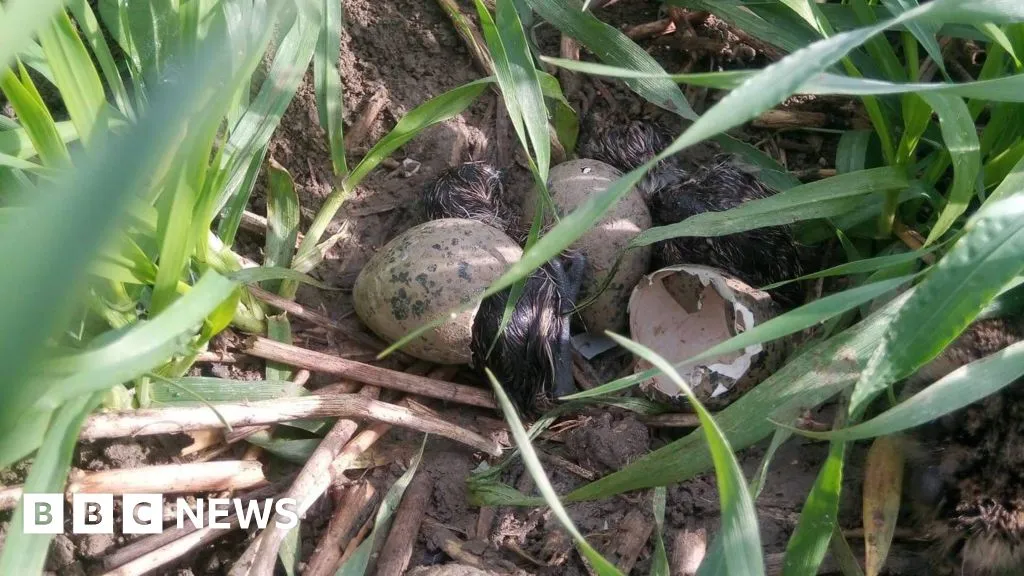A farm is celebrating a record number of breeding pairs of lapwings, a bird red-listed as being of conservation concern in the UK.
The birds first began nesting at Lark Rise, a 400-acre arable farm, near Barton and Comberton in Cambridgeshire in 2018.
The farm is managed by the Countryside Regeneration Trust (CRT), a Cambridgeshire-based national charity promoting nature-friendly farming.
It said five breeding pairs arrived at Lark Hill this year, which was two more than 2023, and they managed to successfully fledge nine chicks.



This is the best summary I could come up with:
A farm is celebrating a record number of breeding pairs of lapwings, a bird red-listed as being of conservation concern in the UK.The birds first began nesting at Lark Rise, a 400-acre arable farm, near Barton and Comberton in Cambridgeshire in 2018.The farm is managed by the Countryside Regeneration Trust (CRT), a Cambridgeshire-based national charity promoting nature-friendly farming.It said five breeding pairs arrived at Lark Hill this year, which was two more than 2023, and they managed to successfully fledge nine chicks.
The farmland birds are known for their typical “peewit” call and bold black and white plumage.The CRT said lapwings had “suffered significant declines elsewhere” and they were now a red-list species.
“This is largely due to changes in farming practices - more cereal farms, increased drainage and increased use of agrochemicals, but most damaging of all has been the early cutting of grass for silage, which destroys the lapwings’ eggs and chicks,” it said.
Lapwings almost always lay four eggs, and their decline is down to breeding failure.In many cases the eggs are eaten or abandoned before they hatch, and even when they do hatch there are continued losses during the chick phase.Incubation takes about four weeks, and from hatching to fledging takes another five weeks during which time lapwings are at their most vulnerable.The families have now left Lark Rise, moving on to a wetland with good feeding, or to the coast or an estuary to gather with other lapwings.
CRT conservation officer Vince Lea, said: "To get through to full-grown birds requires continued good feed opportunities, and it was particularly interesting this year that the families moved away from their chosen nest sites to other parts of the farm to do the main feeding.
“This was probably due to the wet conditions and improved foraging on the regenerative farmed land,” he said.
The original article contains 355 words, the summary contains 306 words. Saved 14%. I’m a bot and I’m open source!